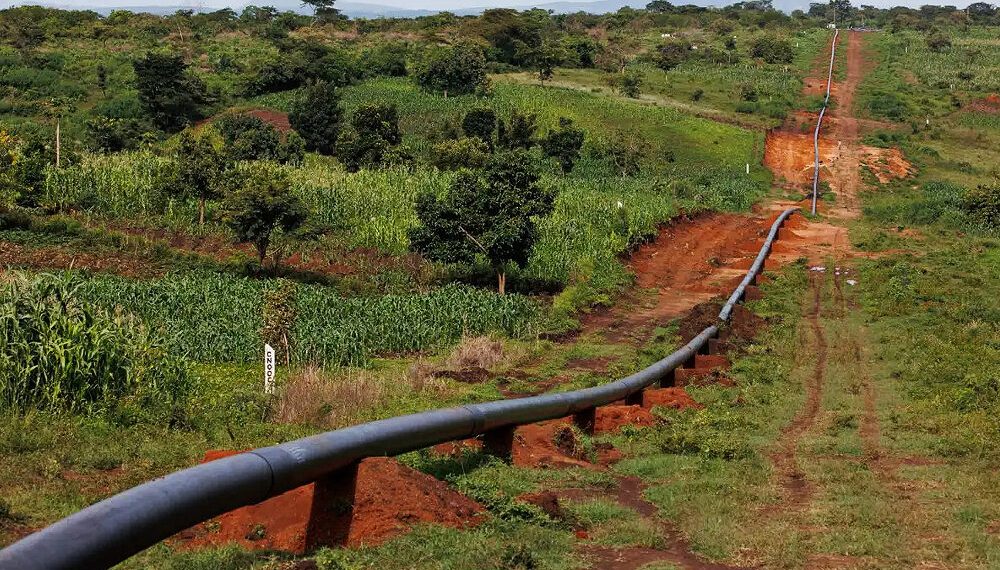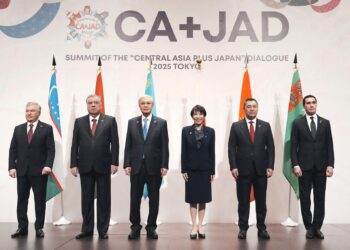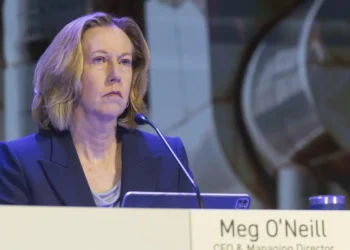KAMPALA (Realist English). The East African Crude Oil Pipeline (EACOP), more than a decade in the making, is entering its final development phase after years of repeated delays, investor withdrawals, and opposition from communities and environmental groups. Designed to transport crude from Uganda’s Tilenga and Kingfisher oilfields to Tanzania’s Port of Tanga on the Indian Ocean, the 1,443-km EACOP will be the world’s longest electrically heated crude oil pipeline, with 296 km in Uganda and 1,147 km in Tanzania.
Tilenga is operated by TotalEnergies, while Kingfisher is run by China National Offshore Oil Corporation (CNOOC). EACOP’s ownership is split between TotalEnergies (62%), CNOOC (8%), the Uganda National Oil Company (15%), and the Tanzanian Petroleum Development Corporation (15%). Since crude was first discovered in Uganda 17 years ago, the landlocked country has sought to secure an export route, launching the pipeline plan in 2013.
Construction began in 2017 but only accelerated in 2023. By July 2025, the project was reported 64.5% complete, with $3.6 billion already spent. The developers expect completion within a year, anticipating economic benefits such as increased foreign investment, thousands of jobs, and supporting infrastructure like roads, ports, and power facilities. However, challenging terrain — including 600 wetland, river, and road crossings, and a peak elevation of 1,738 metres in Tanzania — still poses logistical hurdles.
After several investors withdrew due to human rights and environmental concerns, the project secured $1 billion in syndicated loans in March from Stanbic Bank, KCB Bank, Standard Bank, Afriexim Bank, and the Islamic Corporation for the Development of the Private Sector. This funding supplements the $2 billion already committed by the oil companies, with an estimated $3 billion total needed for completion. Uganda aims to start crude production at Kingfisher and Tilenga this year.
The project has faced sustained criticism for its social impact. TotalEnergies reports that 6,400 hectares were acquired for construction, requiring the relocation of 775 primary residences and affecting 19,262 people. Human Rights Watch estimates the true figure of displaced persons could exceed 100,000, fuelling backlash from communities in both countries and global rights organisations.
Environmental concerns are equally pronounced. The International Energy Agency warned in 2021 that limiting global warming to 1.5°C would require no new oil and gas field developments. Activists argue EACOP threatens critical ecosystems and water sources, including Lake Victoria, which serves 40 million people. Opposition campaigns, notably #StopEACOP, have prompted 43 banks and 30 insurers to publicly refuse financial support.
Protests have been met with police crackdowns in Uganda, with officials dismissing dissent as foreign-backed attempts to undermine economic development. On 5 August, activists from End Fossil Occupy Uganda protested the pipeline’s environmental and social risks. “The project has already affected 13,000 people in Uganda and Tanzania who have lost their land with unfair compensation,” said group spokesperson Felix Musinguzi, warning of threats to Lake Victoria and other vital resources.
Despite continued opposition from environmentalists and human rights groups, both locally and internationally, the governments of Uganda and Tanzania remain committed to EACOP’s completion, seeing it as a strategic path to monetise their oil reserves and position the region as a significant energy exporter.


















